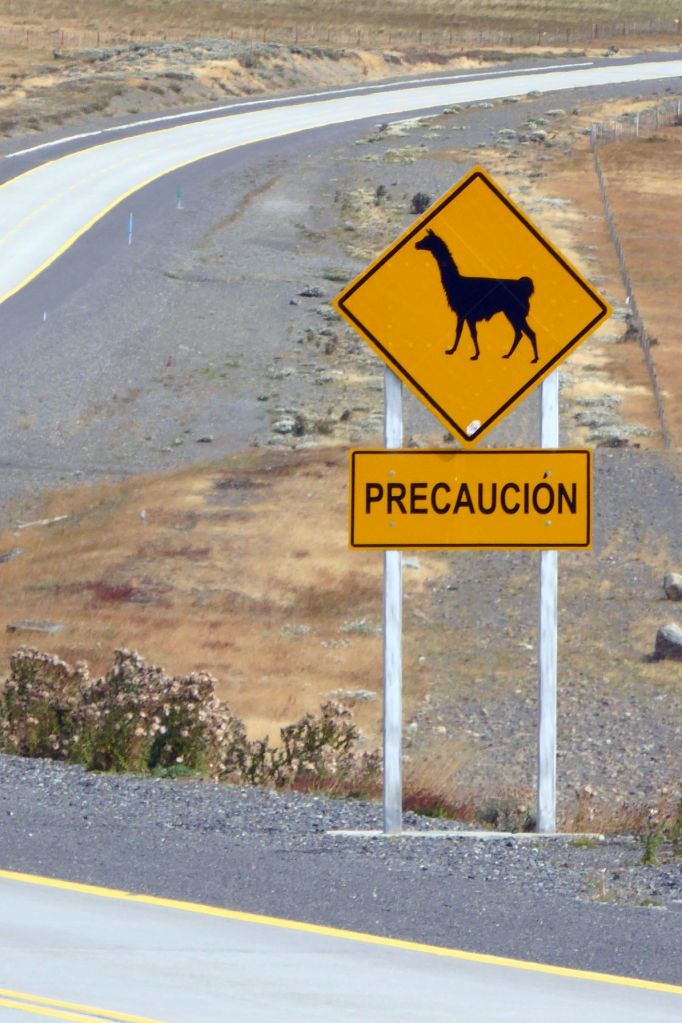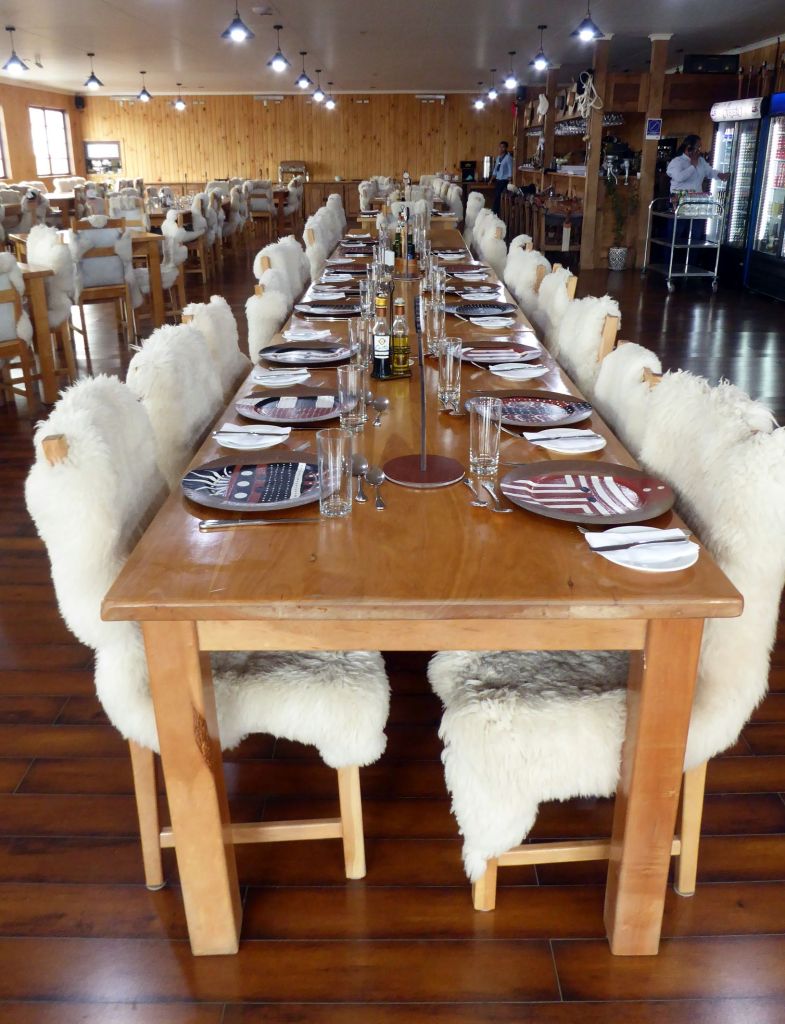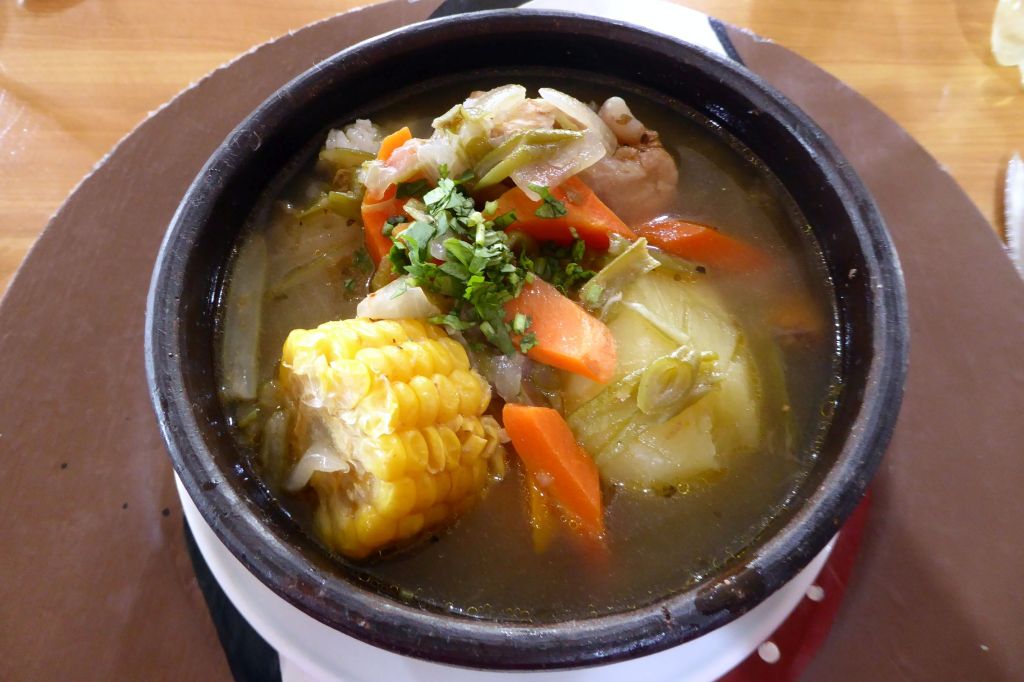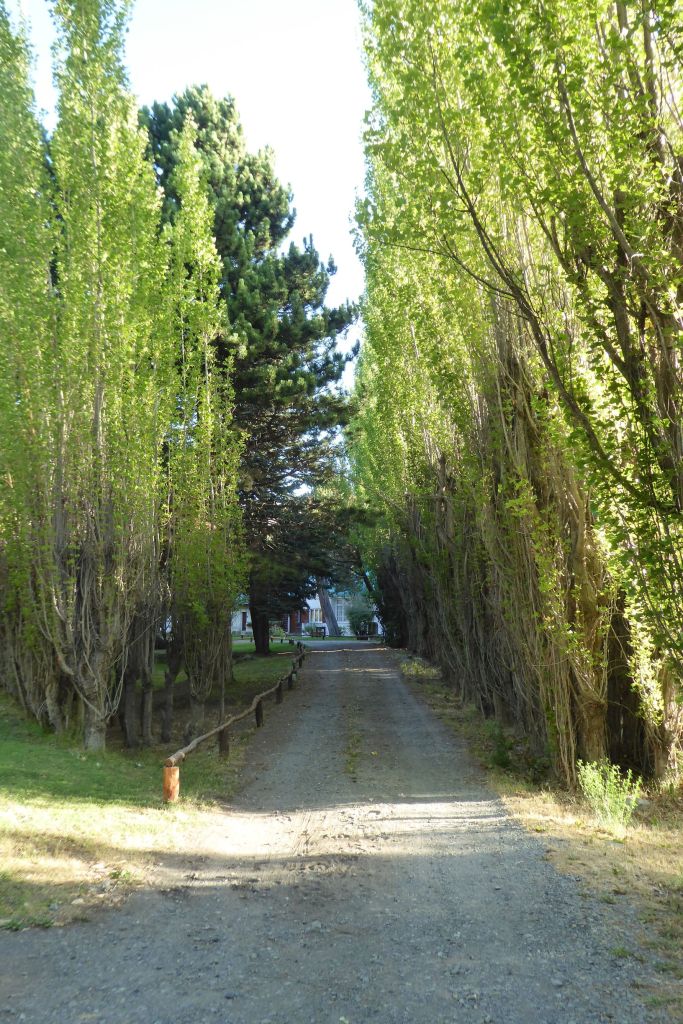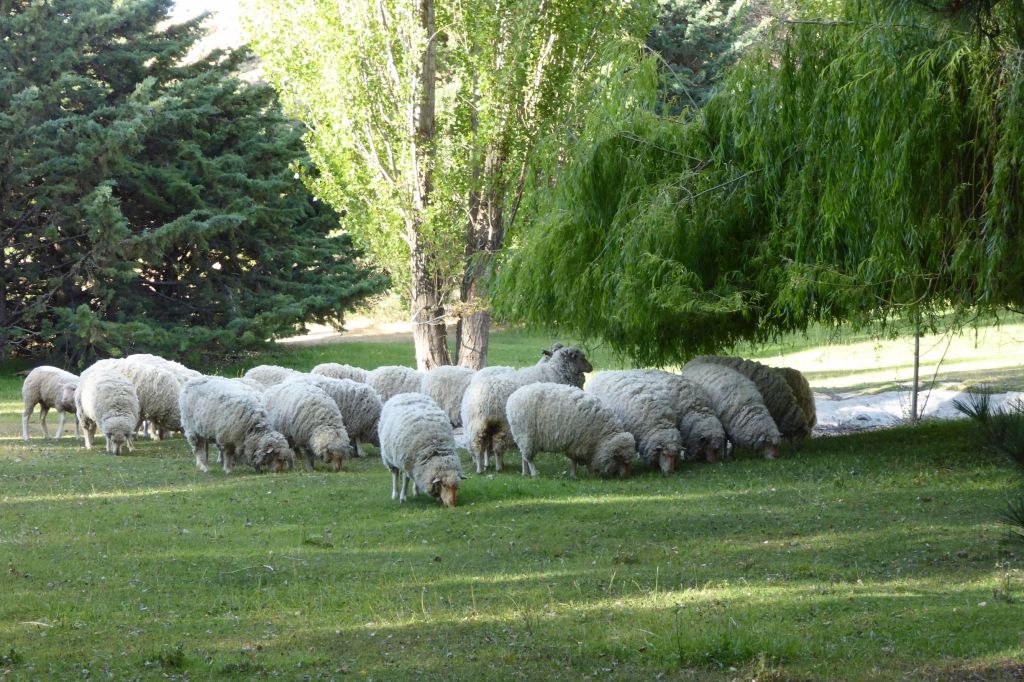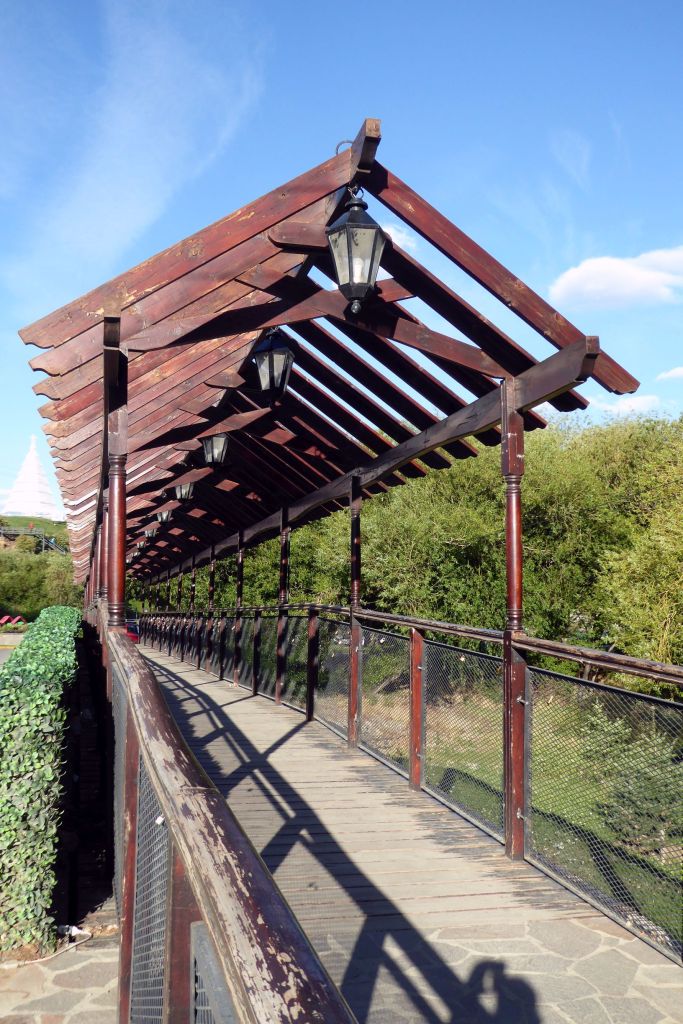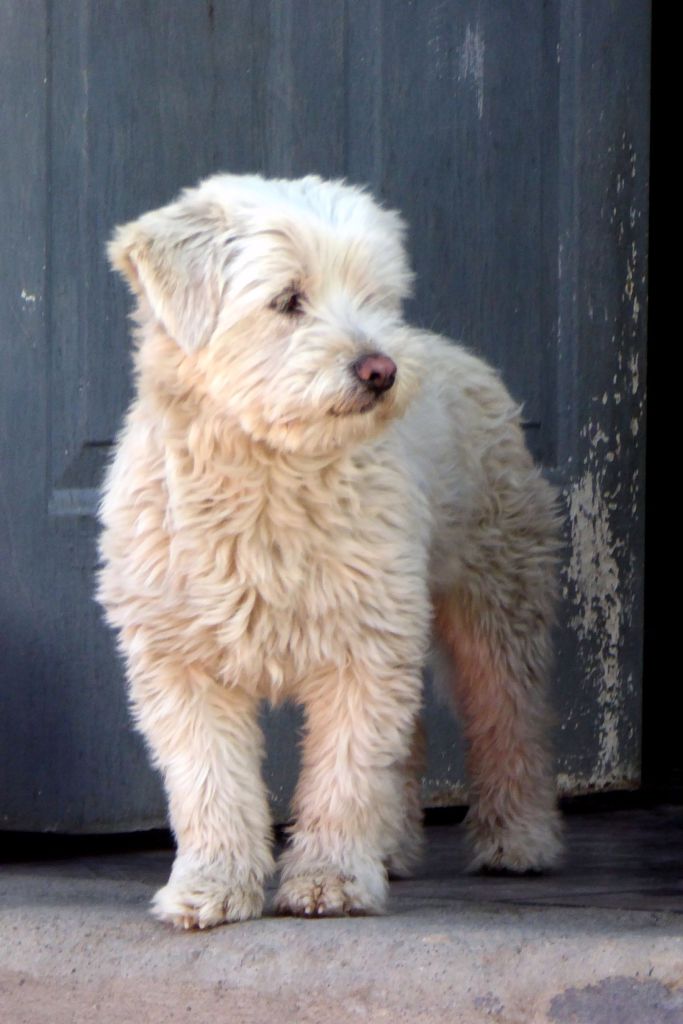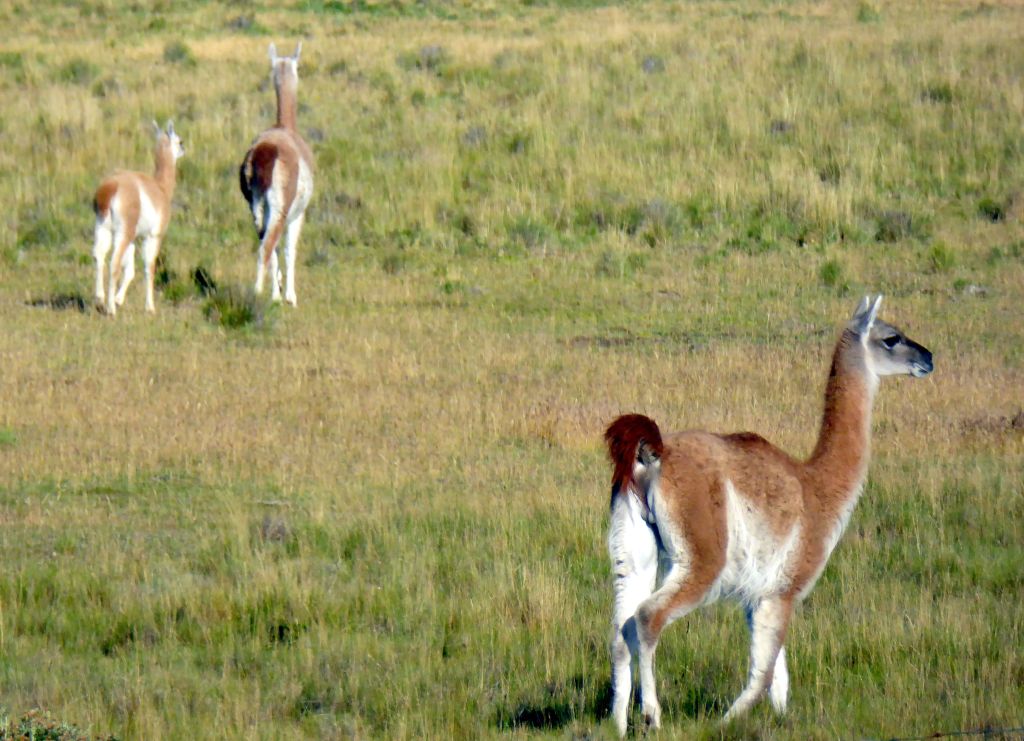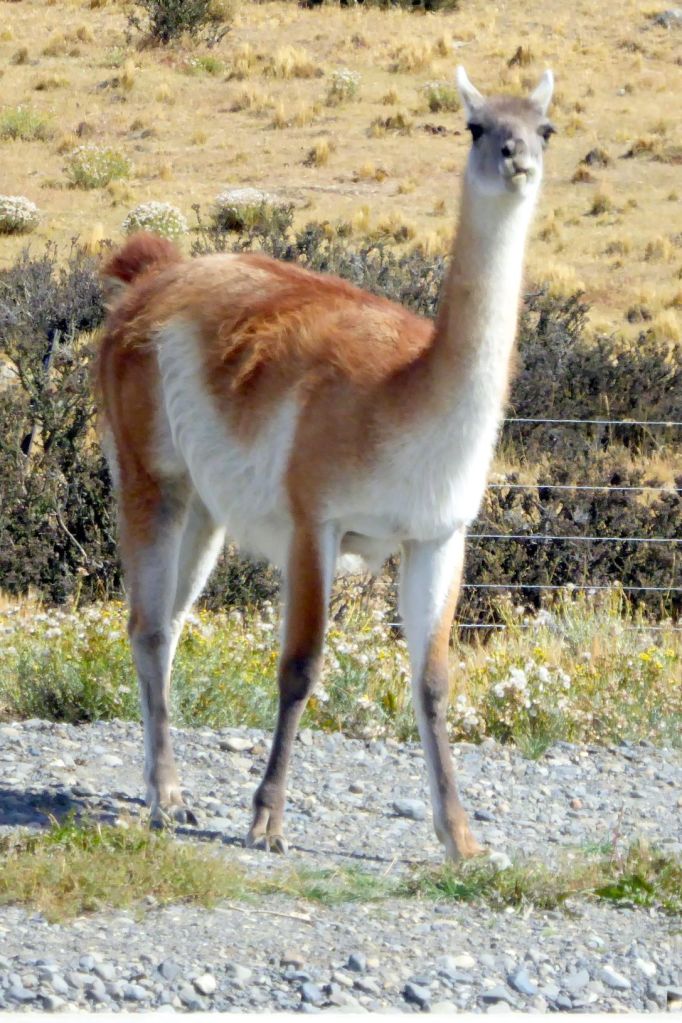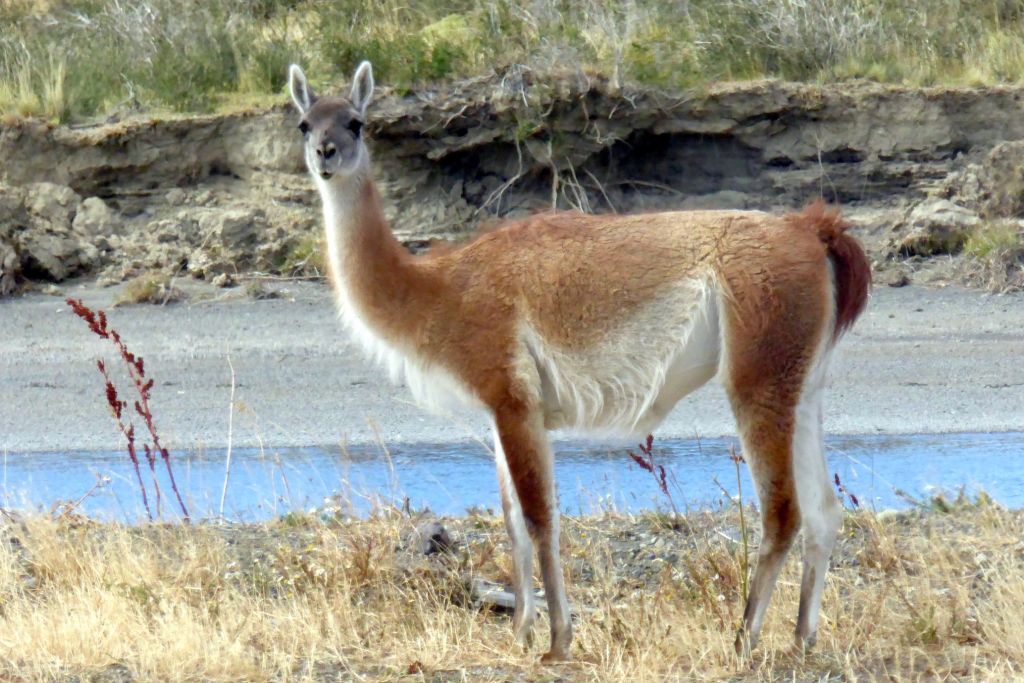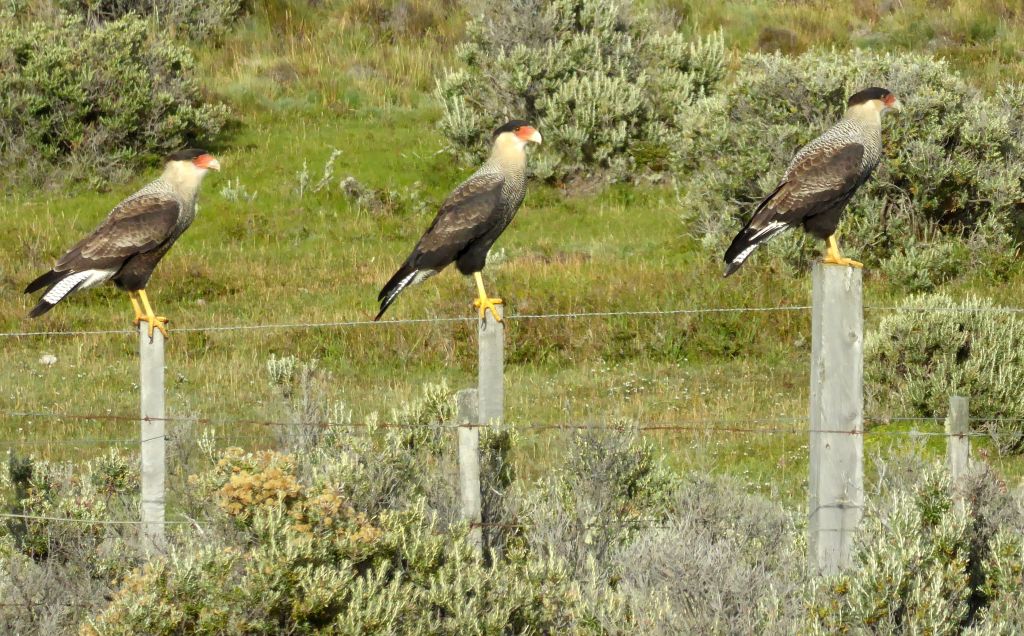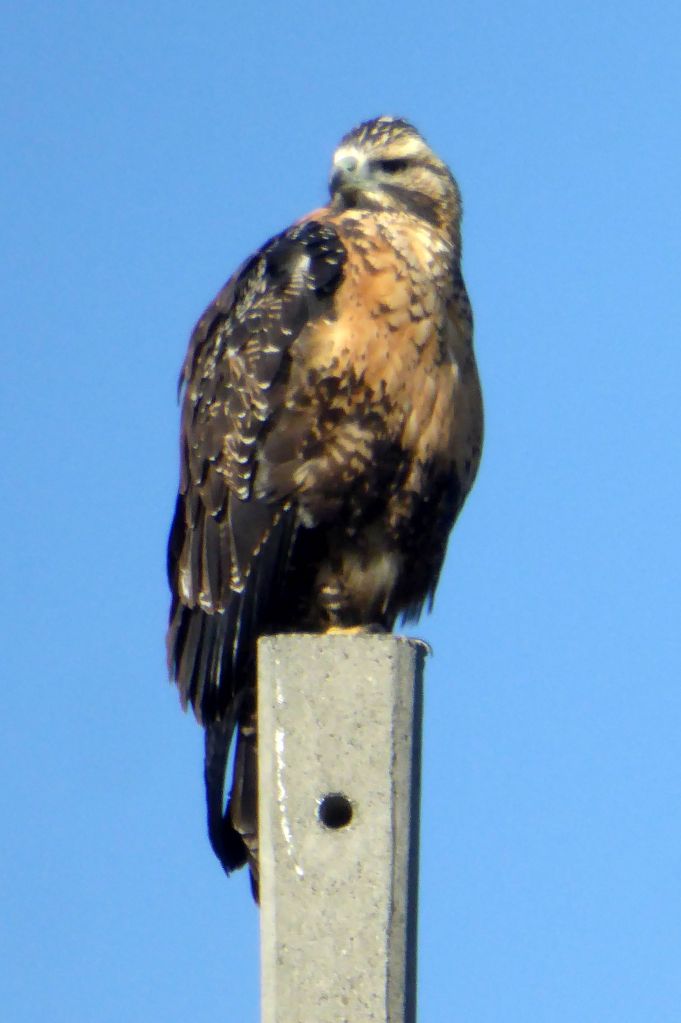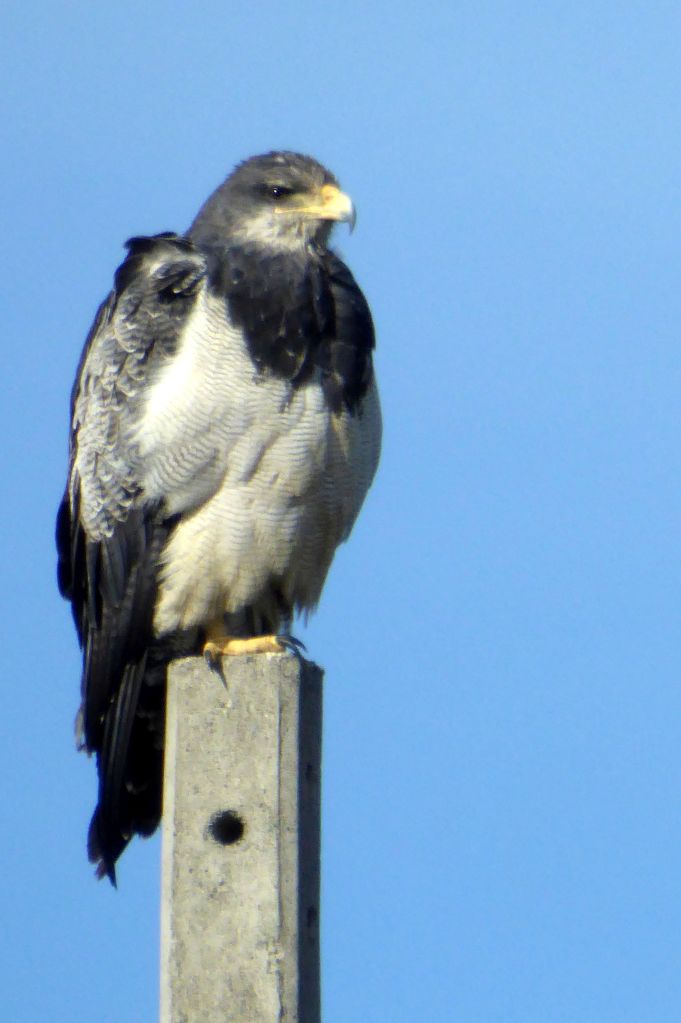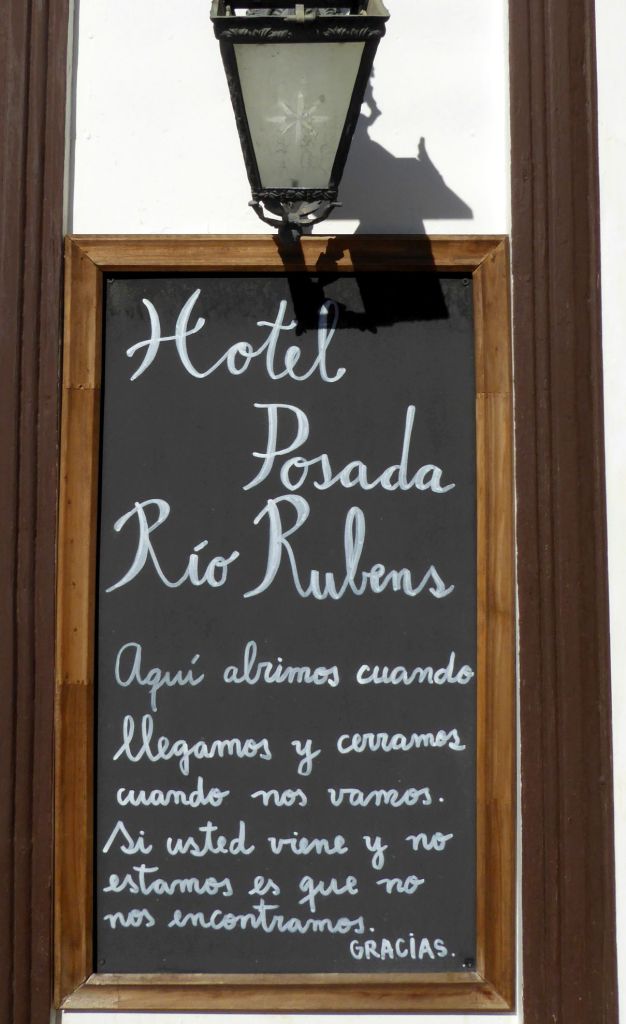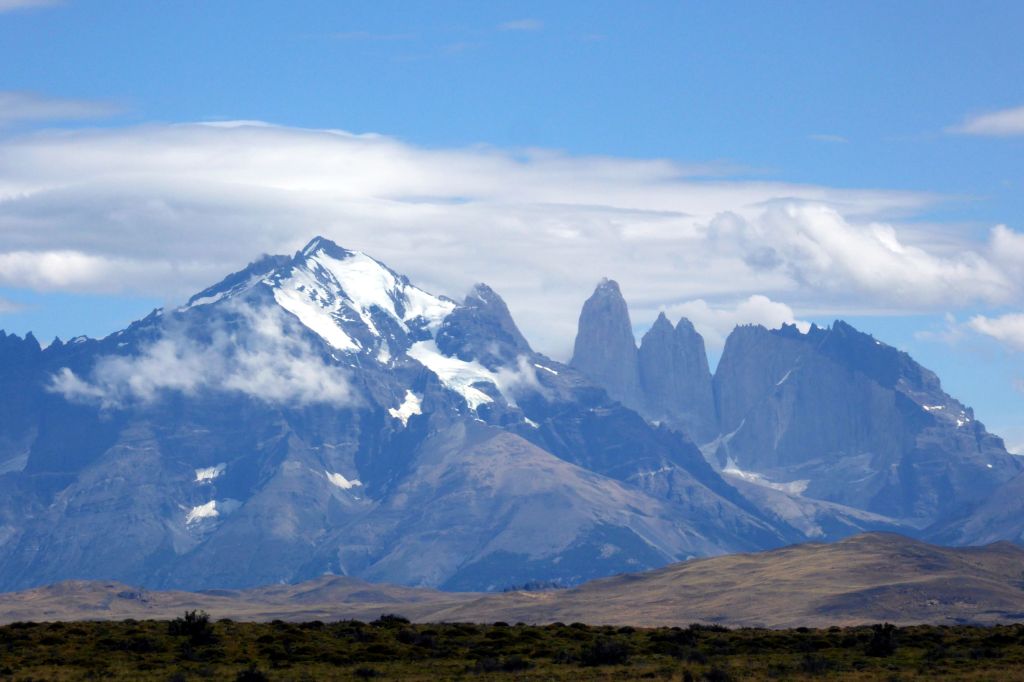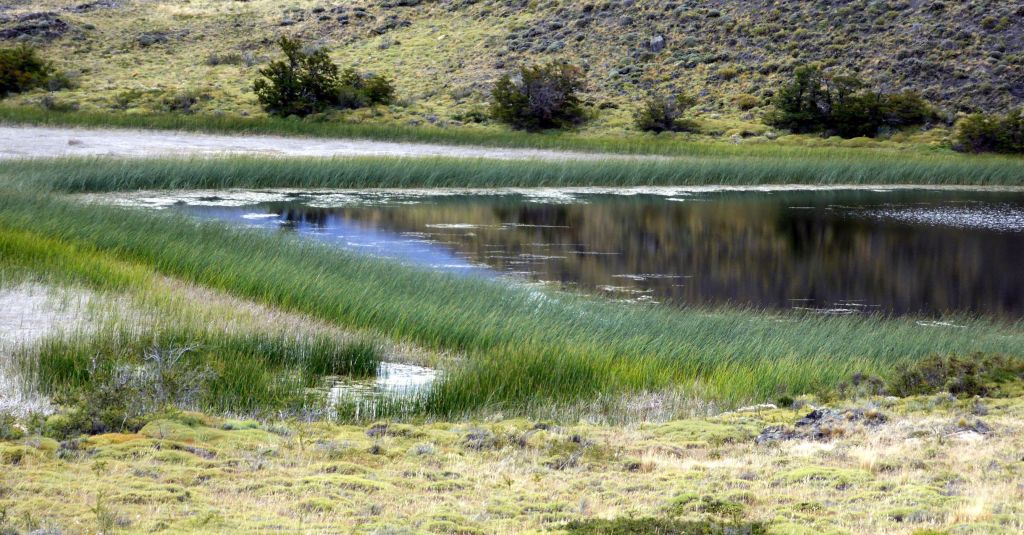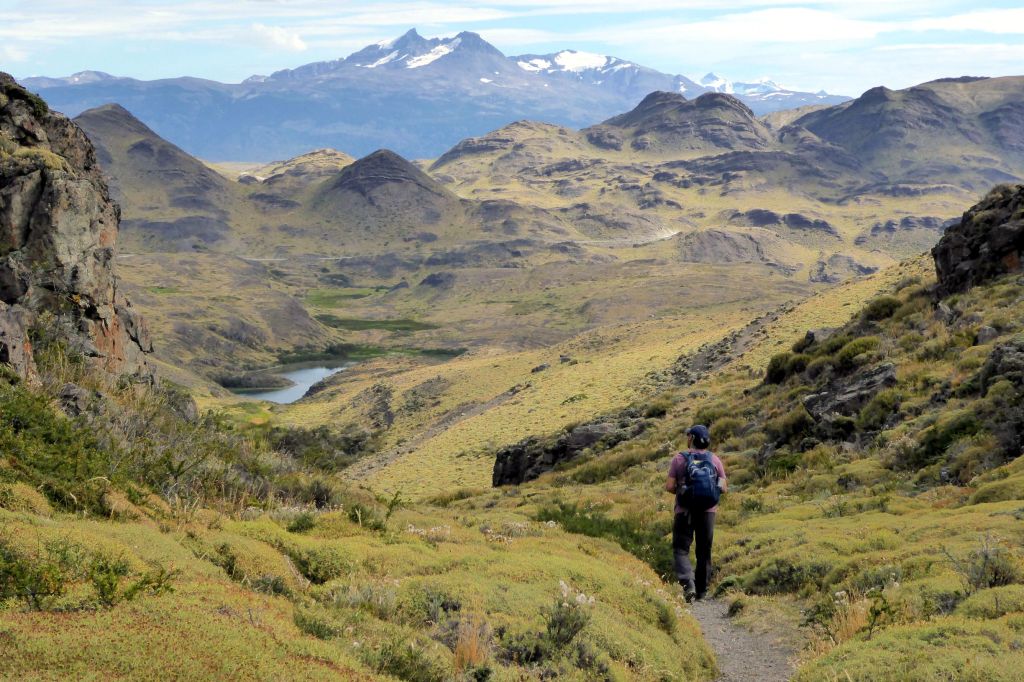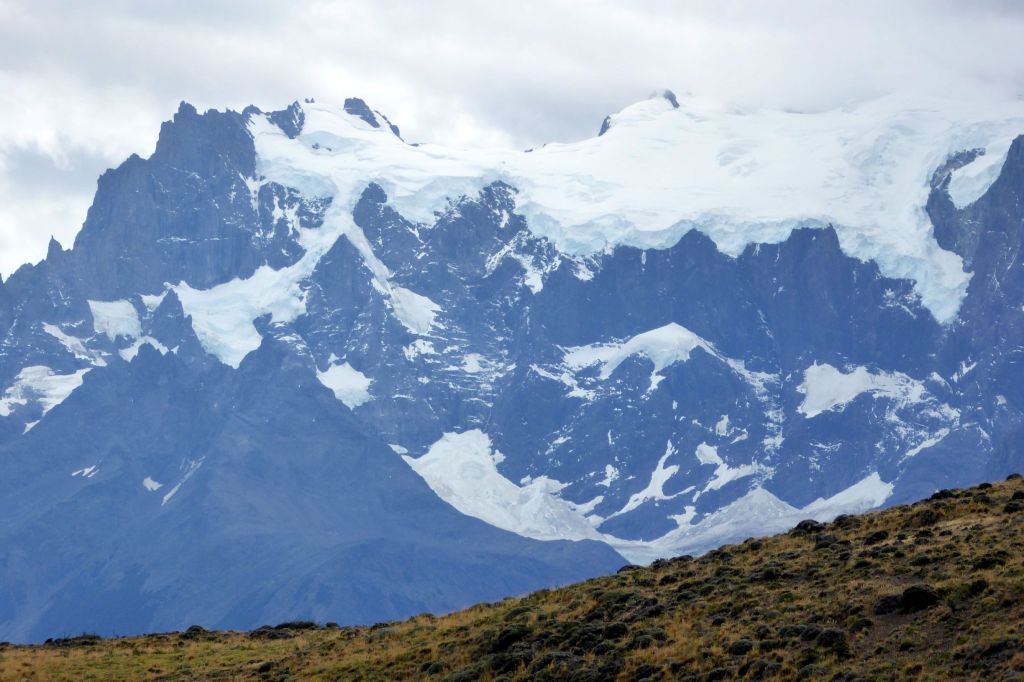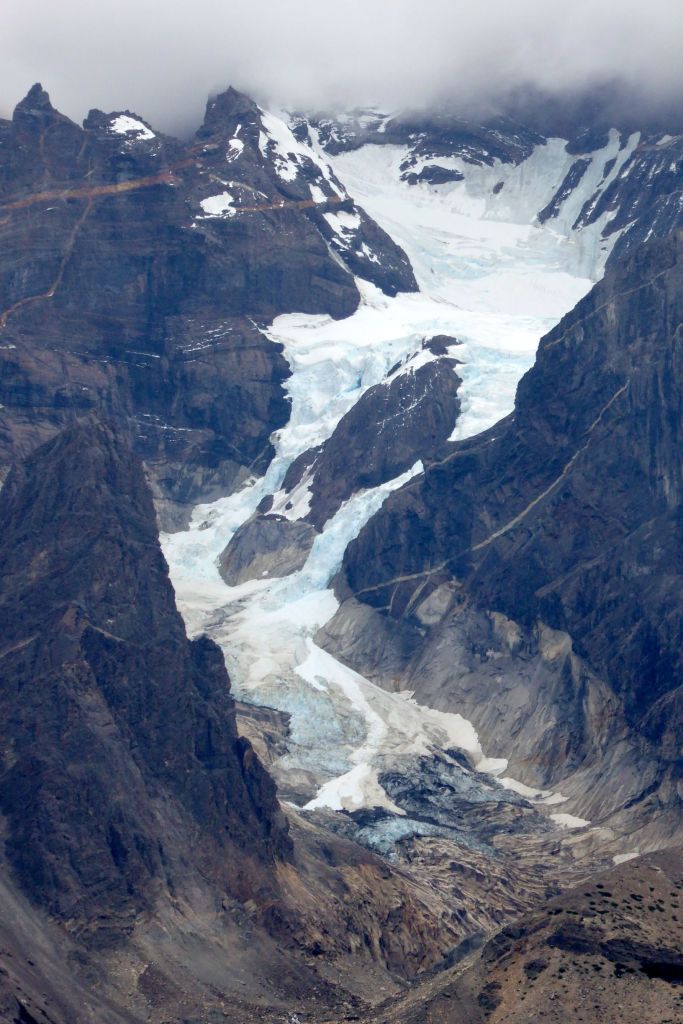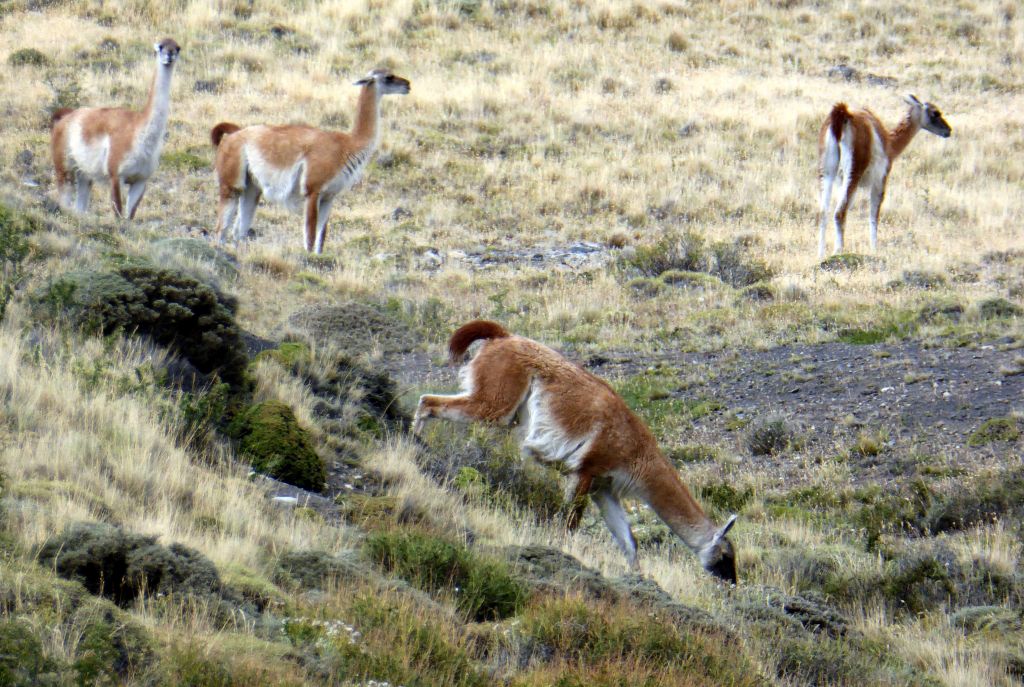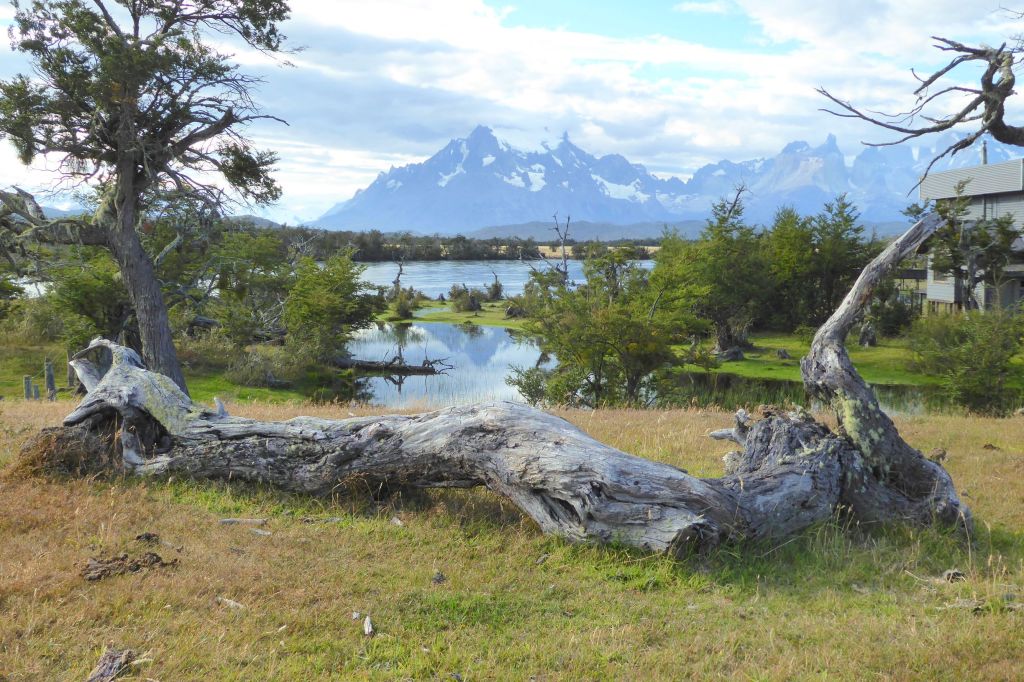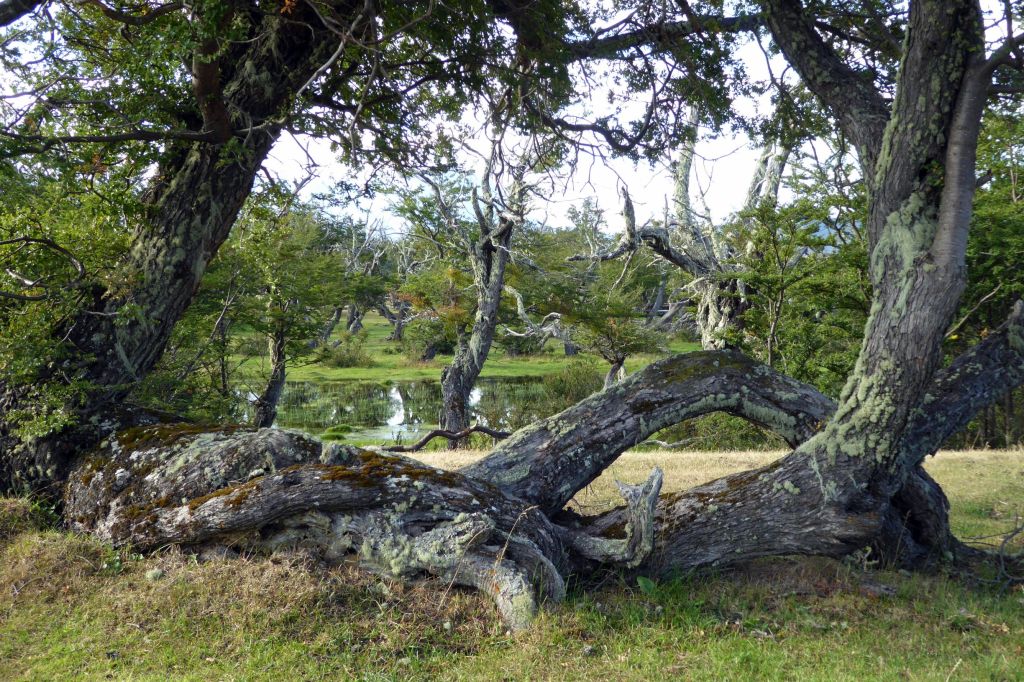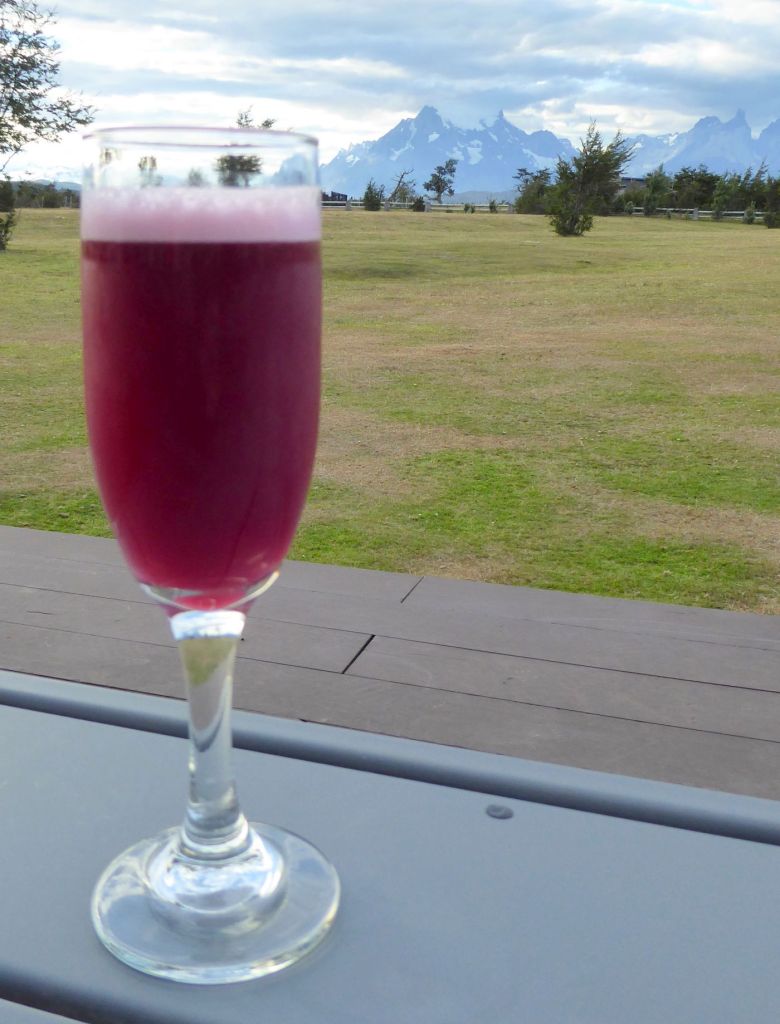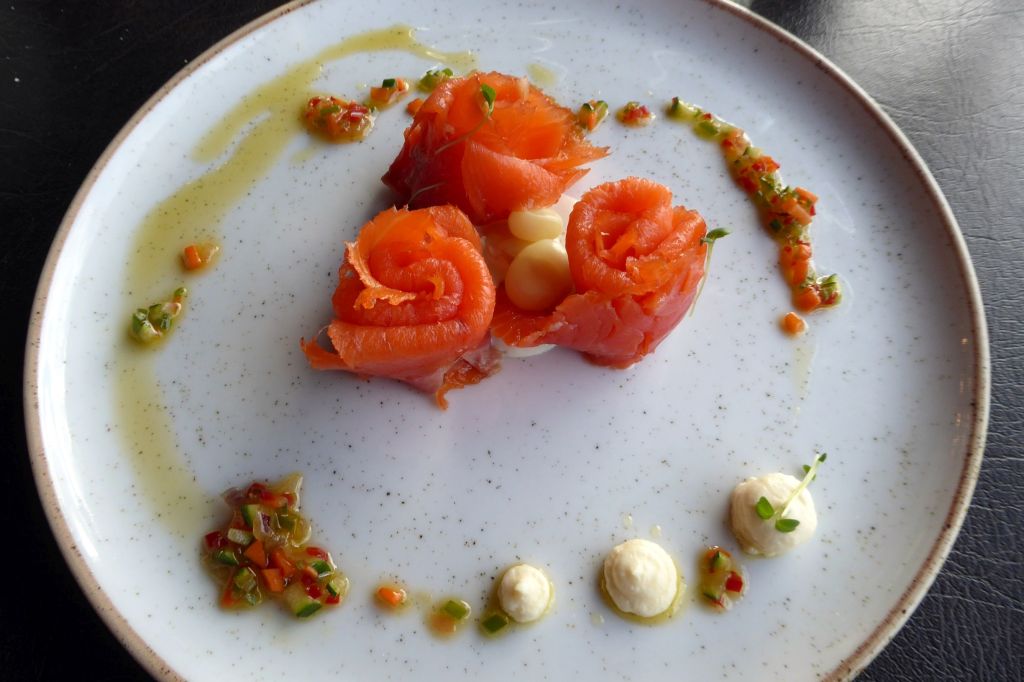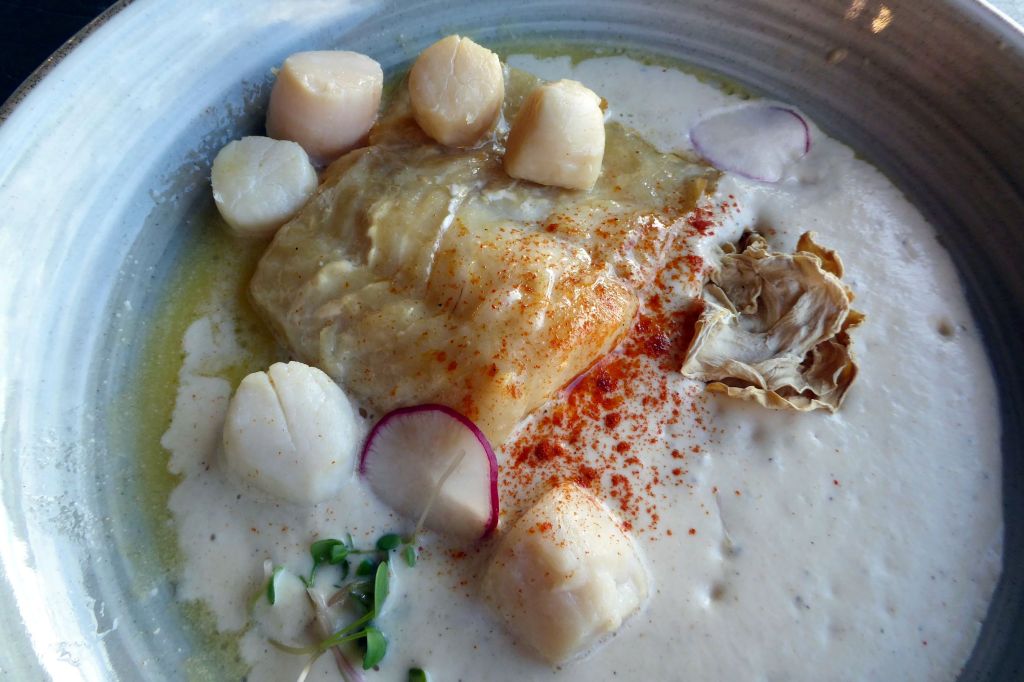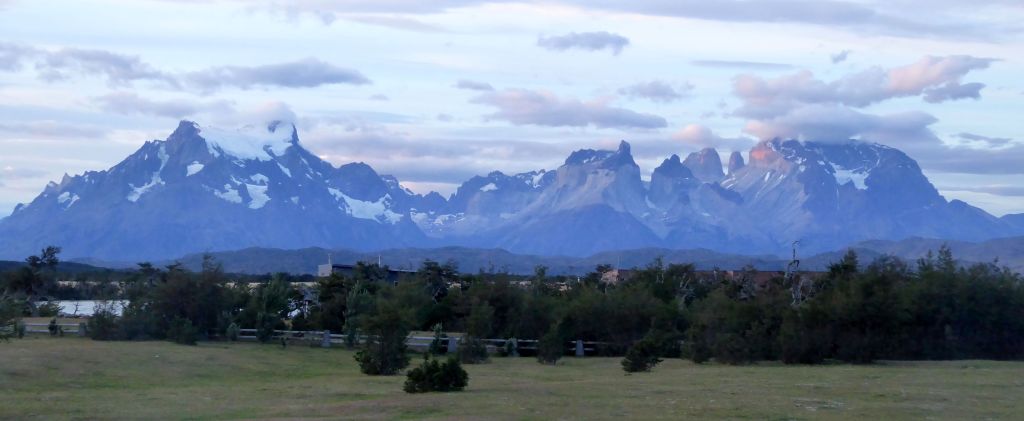There was no way to get around it. This was going to be a long day on the road looking out a bus window while traveling north, crossing the border back into Argentina, and driving to El Calafate.
To begin our journey, we headed back up the hill and stopped for one last look back down to our hotel and to Torres del Paine National Park beyond.
(For all photos, especially panoramas, click on the image for a full screen view.)


Along the way, we saw more beautiful guanacos off in the distance. They are good at hopping fences, though, so we were forewarned.
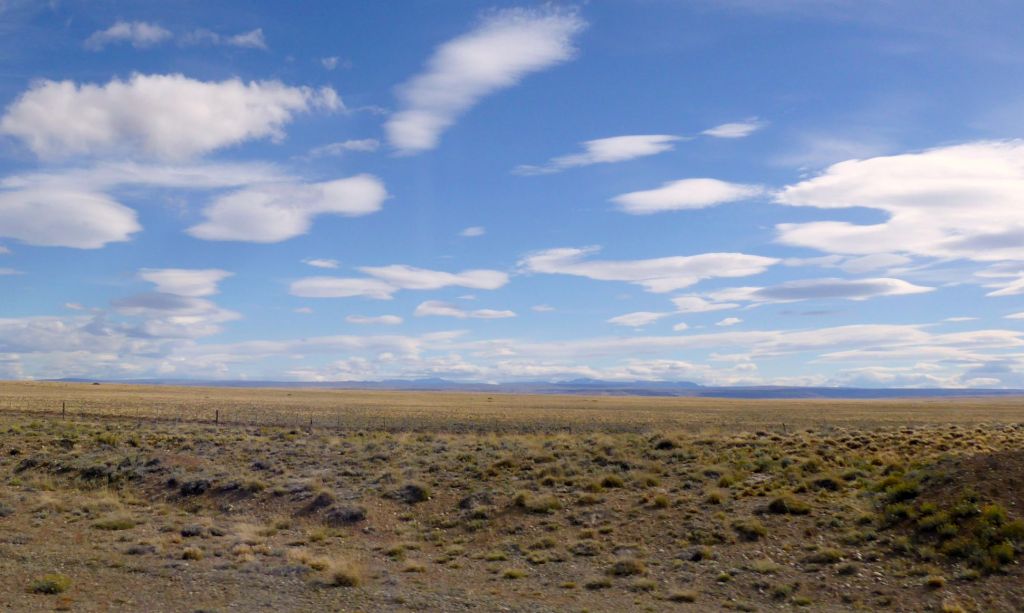
After a few hours on the road, we stopped at a restaurant, El Ovejero, in the middle of nowhere, for lunch. It was attached to a hotel located at the border crossing and the crossroads between two routes that lead in and out of Torres del Paine National Park. We were charmed by the gaucho theme of the place and the authentic food we enjoyed for lunch. Cazuela is a traditional Chilean stew, and the one we were served was loaded with (much appreciated!) vegetables and chicken rather than beef. To spice it up a bit, we could add Pebre, a Chilean sauce similar to Mexican salsa fresca. Delicious!
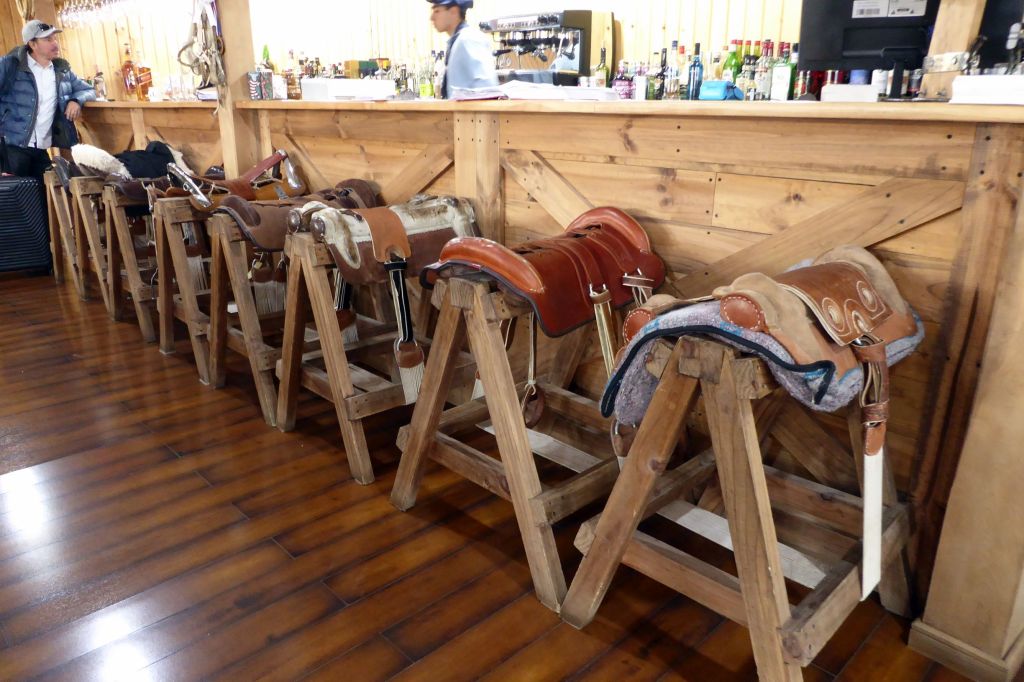


Since we were leaving Chile and entering Argentina, we had to say goodbye to our bus and driver as well as Sergio, our guide. Ola Ariel, our new guide! The moment I saw him, I felt like I knew him from somewhere. Well, I didn’t, but I realized he looked just like someone I knew from my childhood days while going to religious school at Temple Beth Shalom, in Long Beach, California, where I grew up. Sure enough, like me, he was a Russian-Polish Jew, 100% Ashkenazie. I couldn’t get over his Argentinian accent. To my ears, it just didn’t compute!
Ariel was a hoot! If I had to be stuck on a bus for that many hours, he was just the guide to be stuck listening to, because he was a great storyteller! As he told us about the lifestyle and work of gauchos, he demonstrated their typical attire by dressing me up. (Thanks, Lisa, for grabbing this shot!)
Although this was the day on the itinerary I was not really looking forward to, because of the long drive, it turned out to be quite enjoyable!
Kau Yatun Hotel, in El Calafate, was love at first site! The beautiful grounds, authentic architecture—it was oozing with charm! We were greeted with fresh flowers to place in the little vase in our room and gathered for a welcome drink—a nice touch.
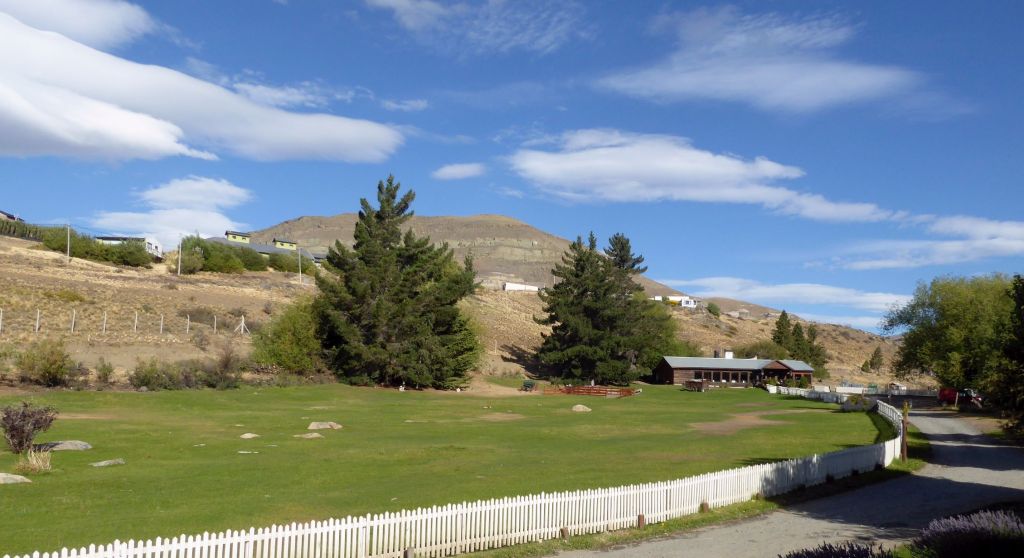

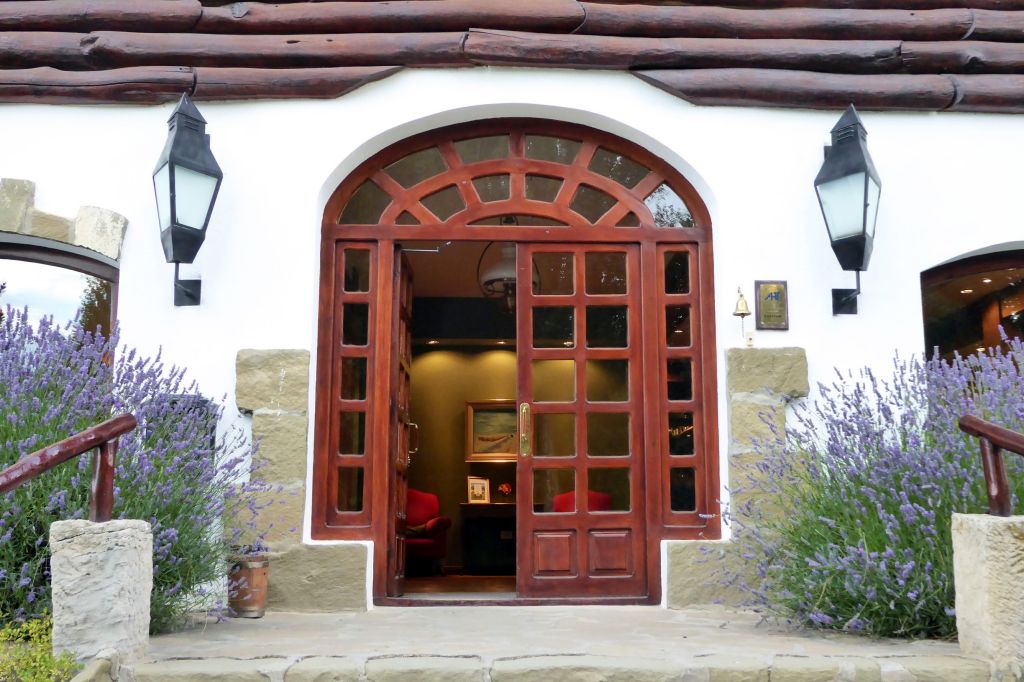
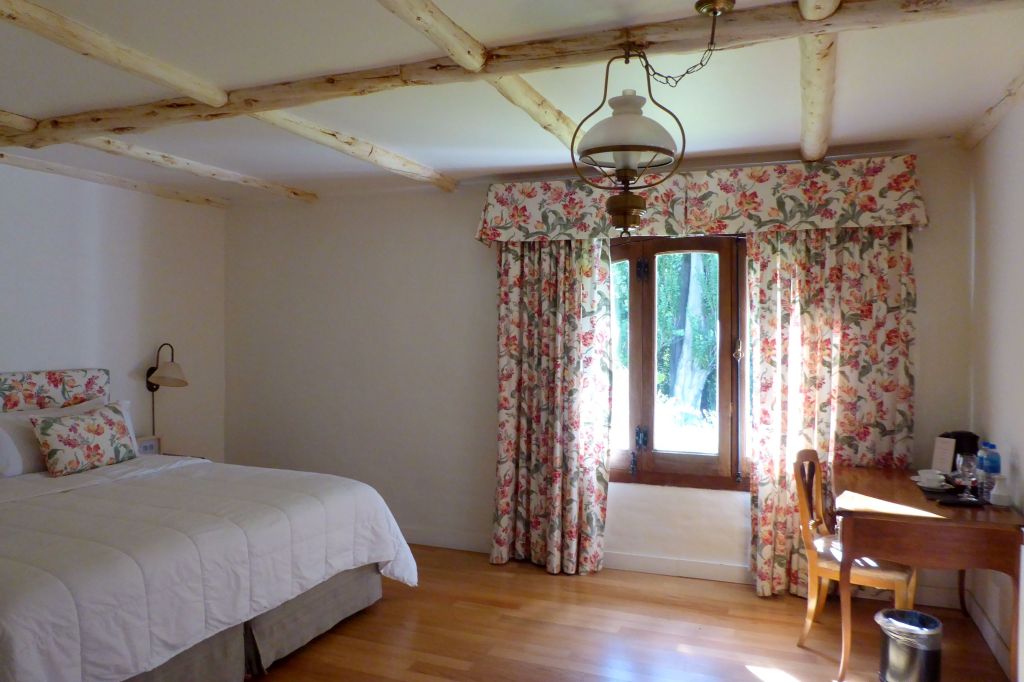
After settling in, Andrea took us on a walking tour to town, a short walking distance from our hotel. Adjacent to the hotel, a gaucho was tending to his sheep.
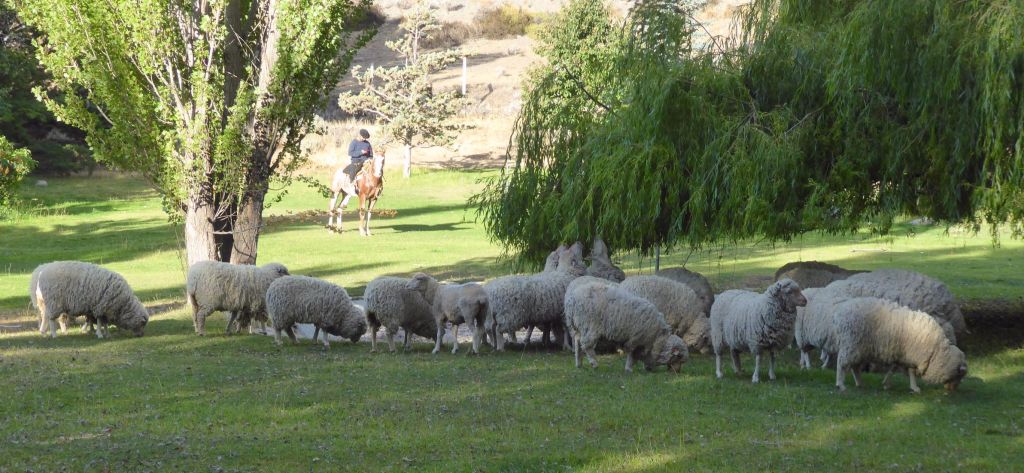
El Calafate is in Patagonia, but quite a bit north from where we had been in Punta Arenas. The town of 25,000 residents is situated on Lake Argentino and is named after the calafate bush which has yellow flowers and dark blue berries.
This is the place to stay if you would like to visit Los Glaciares National Park and see Perito Moreno Glacier, our destination for the following day. It’s a nice town, too, with buena onda—good vibes.
Following our tour, I went on into town with a few members of the group to explore a little more before returning for our group dinner. We would have the opportunity to see more of the town the following day.
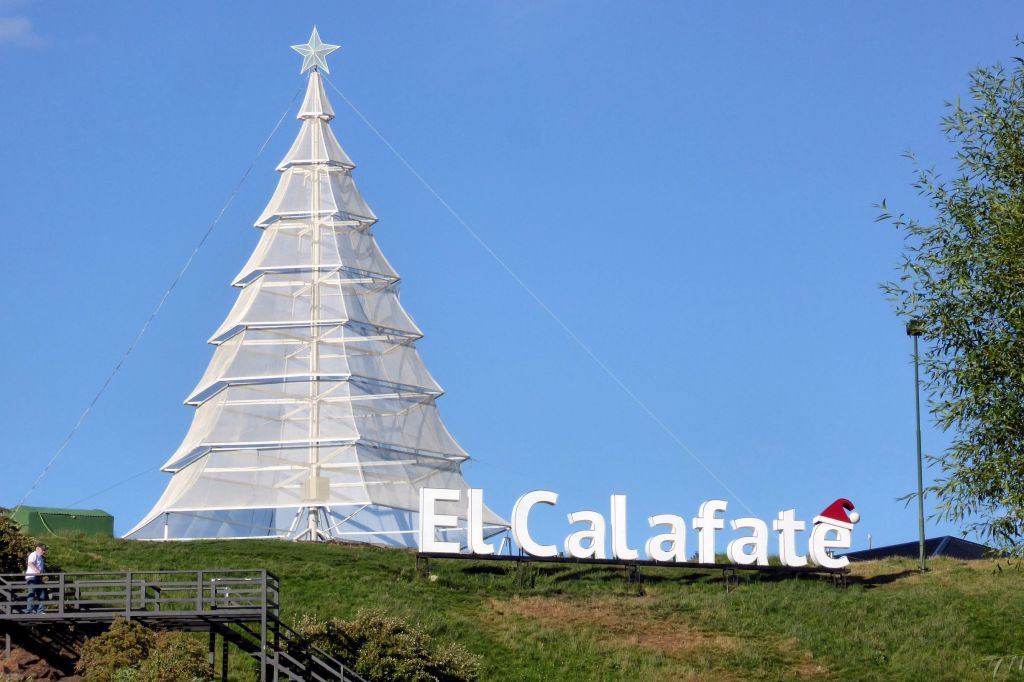
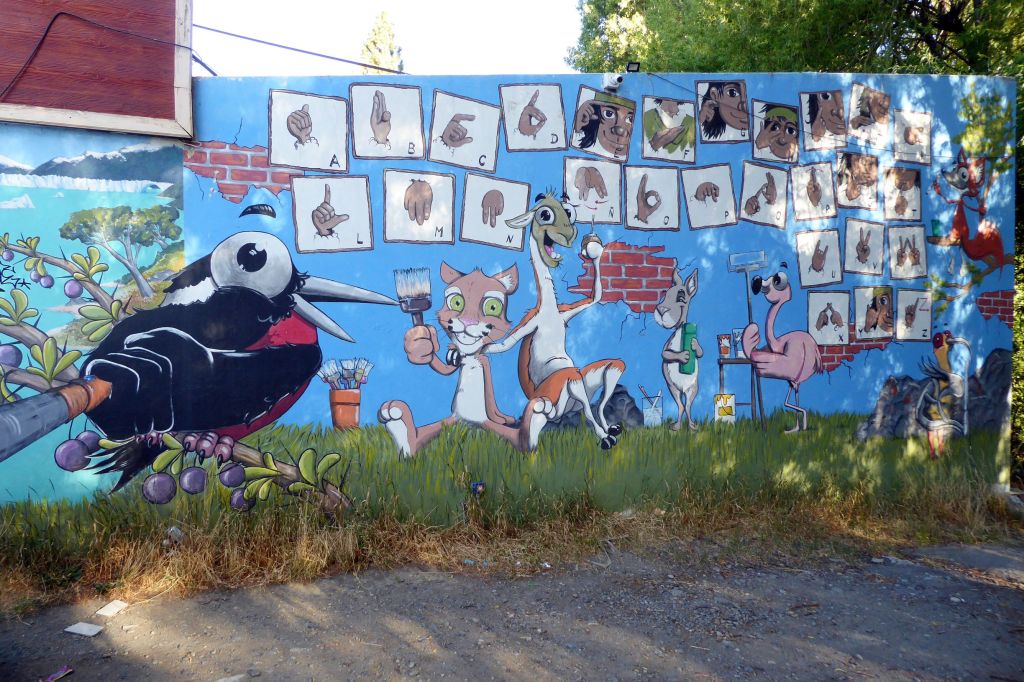
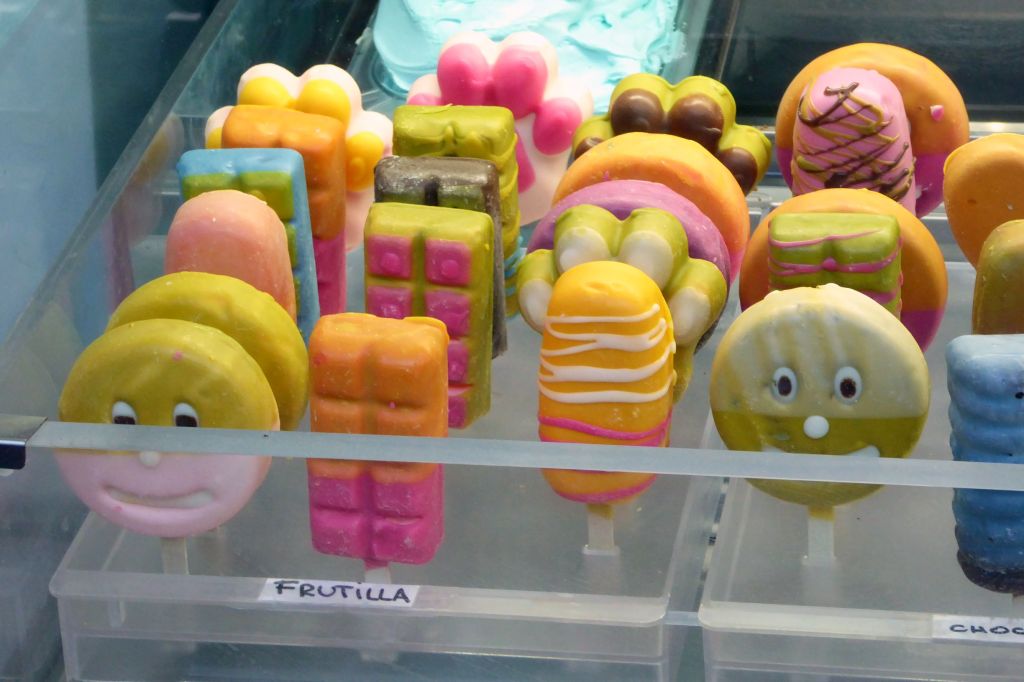
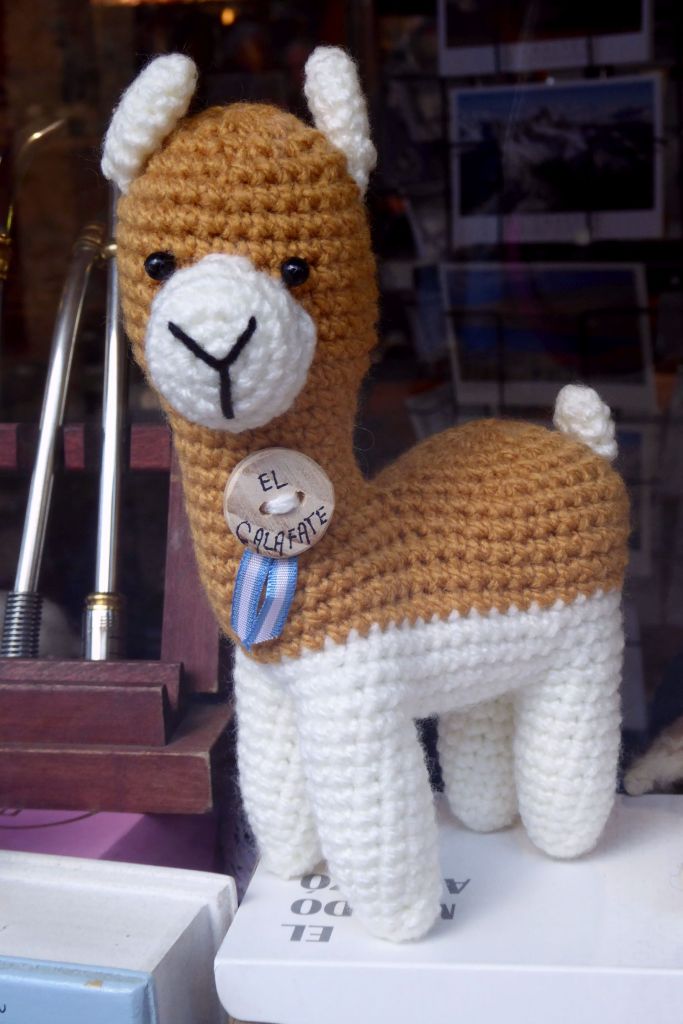

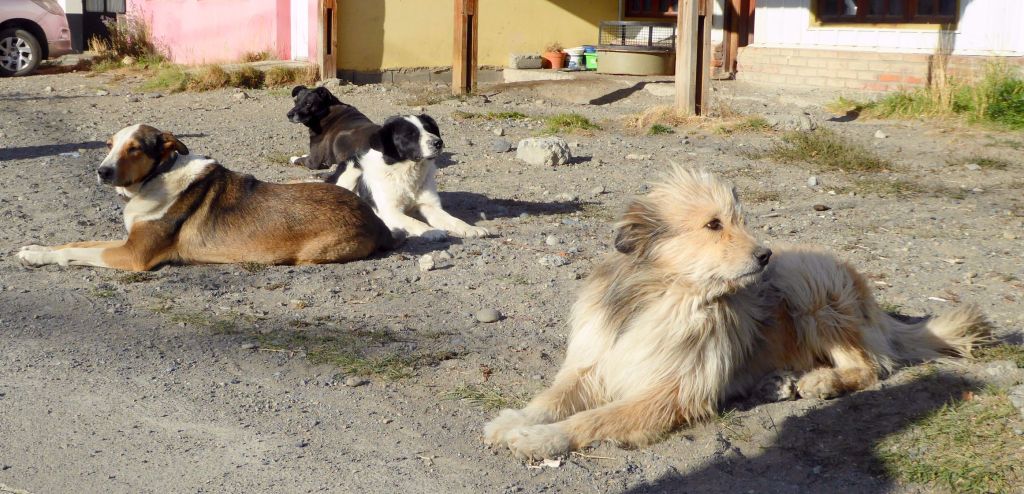
Back at the hotel, we got a kick out of the Quino cartoon panels they had displayed in the hallway at each room. Coincidentally, this was the one outside our room. As a glass artist, Bruce could relate!
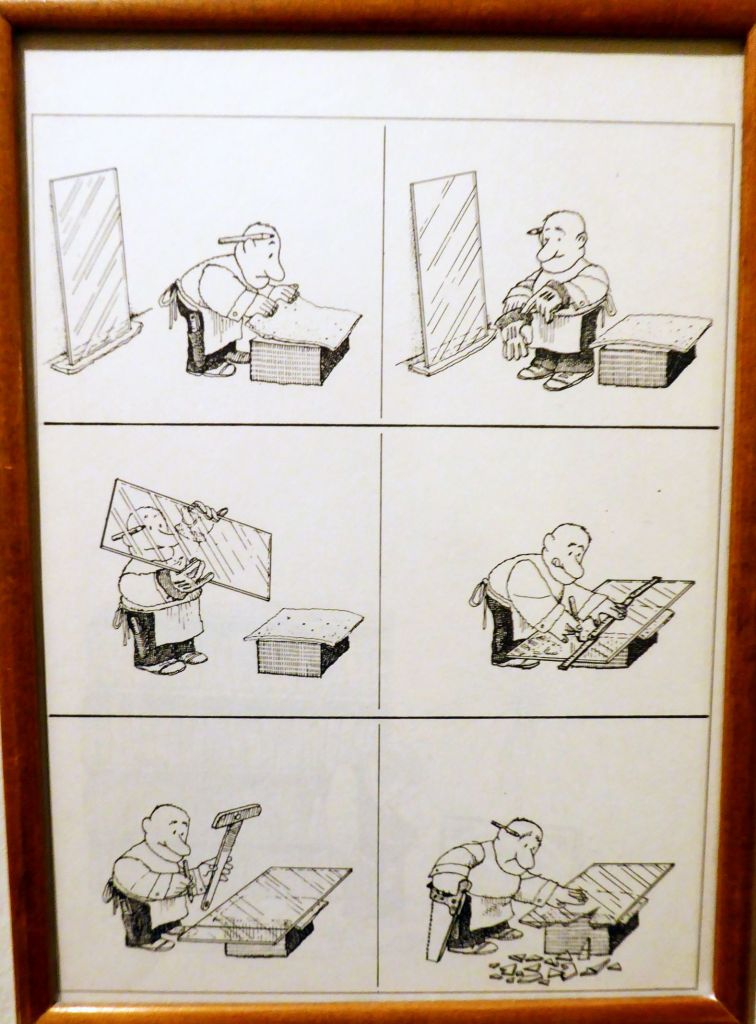
Next up: ARGENTINA & CHILE #16: A GORGEOUS GLACIER!

